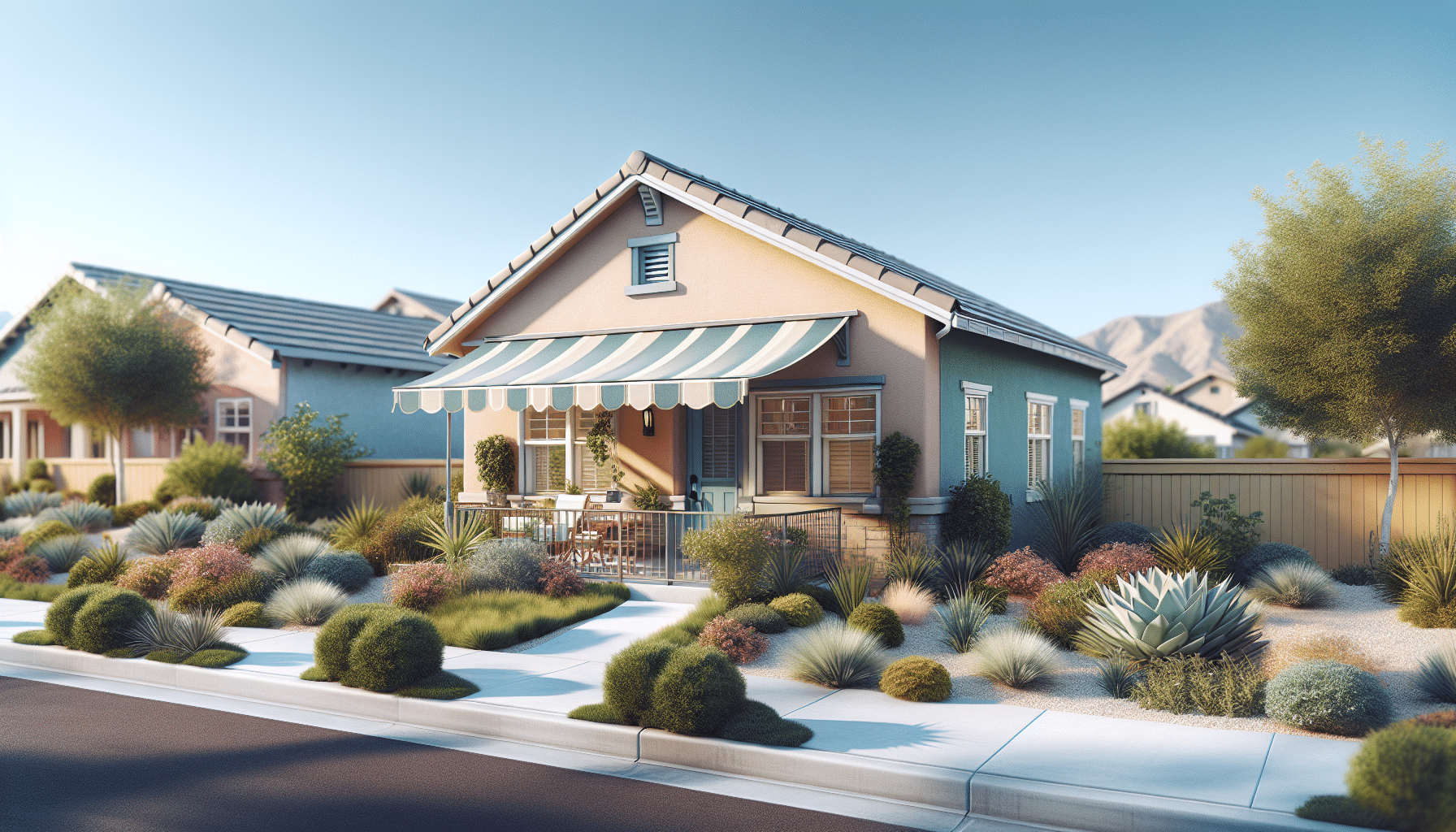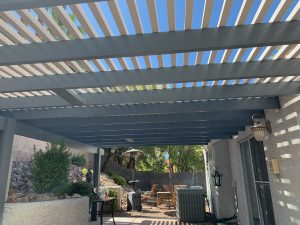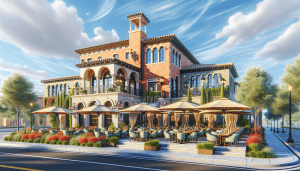Welcome to the world of awning shade Materials, a vital element in creating the perfect outdoor oasis under the dazzling Las Vegas sun. Here at Vegas Pergola Company, we understand the challenges homeowners face when choosing the ideal shade solution. This guide will walk you through everything you need to know about awning shade materials to help you make an informed decision. Whether you’re in Las Vegas, Henderson, or the surrounding cities, we’re here to help you maximize comfort and style.
Contents
- 1 Understanding Awning Shade Materials
- 2 Fabric Awning Materials
- 3 Metal Awning Materials
- 4 Synthetic Awning Materials
- 5 Choosing the Right Awning Material for Your Needs
- 6 Advantages of Using Awning Shade Materials
- 7 Considerations for Installation and Maintenance
- 8 Environmental Impact of Awning Materials
- 9 Innovations in Awning Materials
- 10 Top 5 Features to Look For
- 11 Conclusion
Understanding Awning Shade Materials
Awning shade materials are available in various types, each offering unique benefits and drawbacks. For the uninitiated, choosing the right material can seem daunting. However, understanding the different types can simplify the process. From fabrics to metals, each type has distinct characteristics that cater to specific needs. Therefore, knowing these differences is crucial to finding an awning that perfectly suits your living space.
Fabric Awning Materials
Fabric awnings are popular for their versatility and aesthetic appeal. They come in an array of colors and patterns, making it easy to match your home’s exterior. Additionally, they are typically lightweight and easy to install. However, they may not last as long as other materials, especially in harsh sunlight, unless they are treated for UV resistance. Fortunately, many fabric options include such treatments to ensure a longer lifespan.
Fabrics like acrylic and polyester are favored for their durability and ability to withstand varying weather conditions. Plus, the flexibility of fabric allows for intricate designs and custom modifications. On the downside, maintenance can be more demanding, as they may require regular cleaning and, occasionally, reproofing to maintain water resistance.
Metal Awning Materials
Metal is another popular choice for those looking for durability and strength. Common materials include Aluminum and steel, known for their resistance to the elements. Metals are less prone to fading and tearing, making them an excellent option for permanent installations. While they may lack the colorful charm of fabrics, they are available in different finishes to complement your home’s style.
The sturdiness of metal also provides an added security benefit. However, their weight and rigidity mean that Installation can be more complex and might require professional assistance. When opting for metal, it is crucial to consider the climate, as it conducts heat and may become hot to the touch under the Nevada sun, potentially making it uncomfortable to be around.
Synthetic Awning Materials
Synthetic materials, such as polycarbonate and vinyl, combine some of the best features of fabric and metal. They offer the flexibility and lightweight nature of fabric along with the durability of metals. These materials can withstand high temperatures and resist fading, making them an excellent option for long-term use in sunny climates.
Moreover, they are relatively low-maintenance compared to fabric awnings. Many synthetic materials are designed with a built-in UV resistance, reducing the need for treatments. While they might be slightly more expensive upfront, their resilience makes them a cost-effective choice in the long run.
Choosing the Right Awning Material for Your Needs
Selecting the perfect awning material involves balancing several factors, including style preference, budget, and climate considerations. An awning is an investment in your home’s usability and curb appeal, so it’s crucial to make an informed choice. Our team at Vegas Pergola Company always recommends considering the intended function as your primary decision guide.
If aesthetics are your priority, fabric awnings offer diverse design opportunities. For those emphasizing durability, metal or high-quality synthetics could be the ideal choice. Remember, the right material minimizes future maintenance, ensuring you enjoy your outdoor space without worry.
Advantages of Using Awning Shade Materials
Investing in awning shade materials can transform your outdoor spaces by providing comfort and aesthetic appeal. Awnings not only enhance the visual interest of your home but also offer practical benefits such as reducing energy costs. By providing shade, awnings help to keep indoor spaces cooler, thus relieving your air conditioning system.
They also offer a degree of weather protection, allowing you to enjoy the outdoors regardless of rain or shine. The extended living area provided by awnings can become an oasis for relaxation and entertainment, increasing your home’s usability and potentially boosting its value.
Considerations for Installation and Maintenance
Before installing awnings, it’s important to evaluate your home’s architectural features and local climate. These factors influence the installation method and material choice. While fabrics might be straightforward to set up, metals and synthetics require careful measurement and possibly professional installation for optimal results.
Maintenance varies by material, with fabric generally needing the most care due to exposure to elements. Regular cleaning and protection from debris extend an awning’s life. Metal and synthetic options usually demand less upkeep, but occasional checks for rust or damage ensure longevity.
Environmental Impact of Awning Materials
As environmentally conscious options become more significant for homeowners, choosing sustainable awning materials is increasingly important. Fabrics made from recycled materials reduce environmental footprints, while powder-coated metals limit toxic runoff. Synthetics, particularly those that are recyclable, have less environmental impact in their life cycle.
Considering the environmental impact when selecting awning materials aligns with broader efforts to reduce carbon footprints. Choosing eco-friendly options not only benefits the planet but can also enhance your home’s value, appealing to eco-conscious buyers should you decide to sell.
Innovations in Awning Materials
Advancements in technology have revolutionized awning materials, offering more features and better performance. High-tech fabrics now incorporate self-cleaning properties and advanced UV blockers. Similarly, metals are now designed with improved rust resistance, while synthetics boast increased flexibility.
These innovations not only improve the awning’s lifespan but enhance their functional capabilities, allowing for electricity-generating solar panels or motorized retractable systems. Staying informed about these advancements can help you make a future-proof investment in your home.
Top 5 Features to Look For
- UV Resistance is critical, especially under harsh sunlight, to ensure longevity and effectiveness in cooling your space.
- Durability is essential for less maintenance and longer-lasting beauty, particularly in areas with extreme weather conditions.
- Water Resistance is crucial for protection during rainy seasons, allowing you to enjoy your outdoor space without worry.
- Design Flexibility allows customization to match your aesthetic goals, offering a range of styles, colors, and patterns.
- Ease of Installation simplifies the setup process, saving both time and potential costs associated with professional installation.
Conclusion
Choosing the right awning shade material is an investment in both the beauty and functionality of your home. To explore the best options for your needs, call us at 702-978-6239 or Request a Free Quote today.




